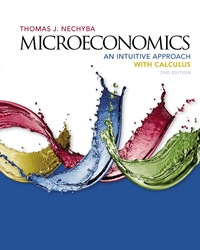Consider again the example in within-chapter-exercise 29a.2. Suppose d 5 1/ 1.05 < 0.952. What is the
Question:
Consider again the example in within-chapter-exercise 29a.2. Suppose d 5 1/ 1.05 < 0.952. What is the highest level of b that could lead to the choices in the example? What would d have to be now if b 5 1 to lead to the present choice, and why does this not help us explain the dual result described in the example?
Fantastic news! We've Found the answer you've been seeking!
Step by Step Answer:
Related Book For 

Microeconomics An Intuitive Approach With Calculus
ISBN: 9781337335652,9781337027632
2nd Edition
Authors: Thomas Nechyba
Question Posted:






